The Evolving DNA of an Independent School
A conversation between Sasaki principal Vinicius Gorgati and Lawrenceville School Head Master Steve Murray
 Sasaki
Sasaki
Frederick William Gunn founded The Frederick Gunn School in 1850. He was an educator, abolitionist, and advocate for the outdoors, and he was responsible for great innovations in curriculum and student development. The school’s new building honors his vision.
The Center for Innovation and Active Citizenship unites a range of learning environments together in one integrated building that brings a contemporary expression to campus while maintaining the scale and integrity of its surrounding context. The building is sited at the edge of the campus quad and within close proximity of Bourne Hall, one of the campus’ main historic buildings.
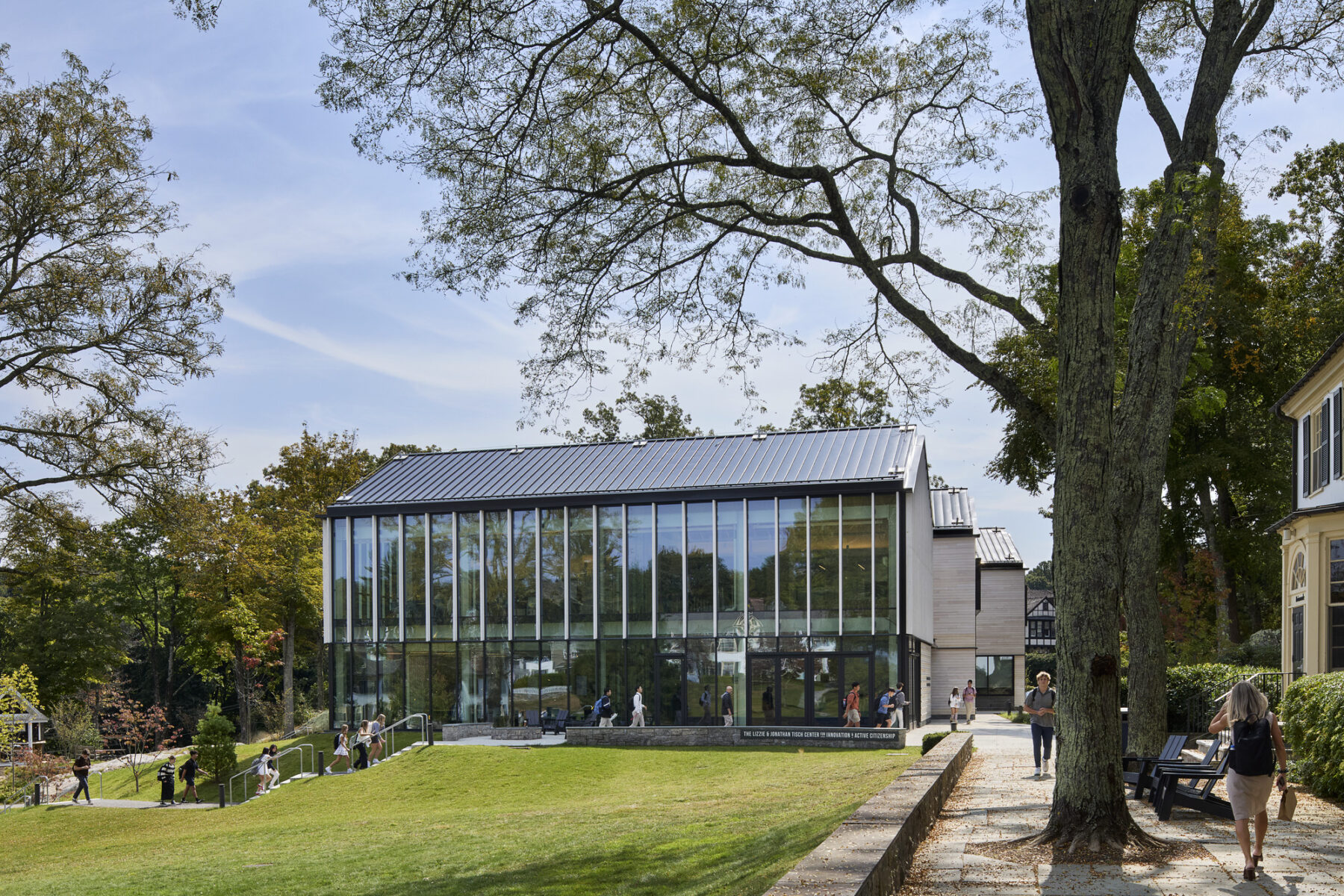
The Tisch Center is a beacon that frames the campus’ main open space
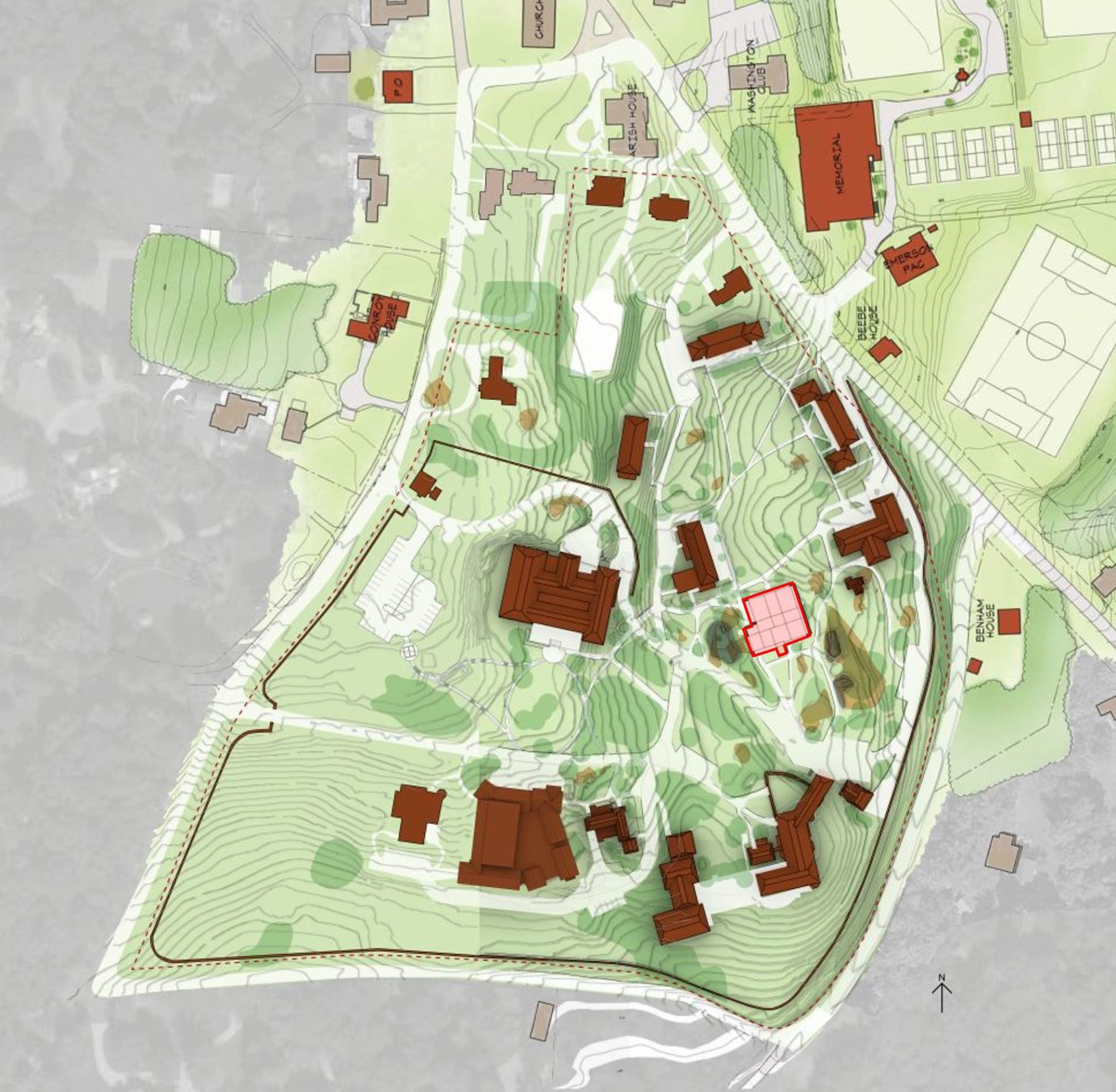
The Tisch Center replaces an outdated brutalist-style building located at the geographic center of the Gunn School campus
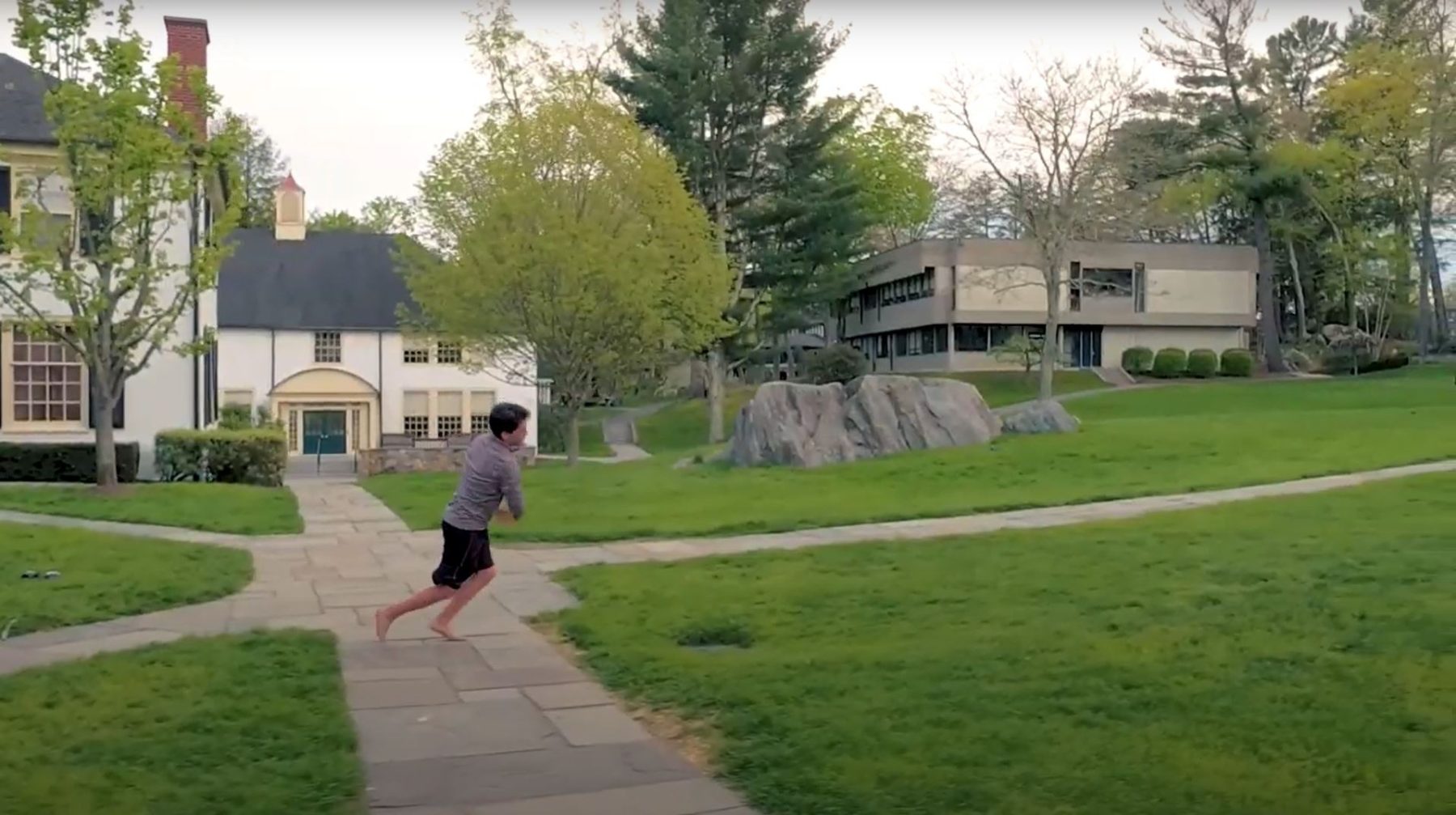
The previous science center no longer supported contemporary learning needs and was nearing the end of its useful life on campus
Three pavilions shape the building’s massing and organize the program into three primary zones. This approach reduces its perceived scale in relation to the campus’s adjacent historic buildings. Materiality is inspired by the wooded and rocky nature of the site and the vernacular architecture of the campus and region, with a focus on a simple palette, uniformity of colors, and weathered/treated materials.

The building’s envelope at the ground floor is influenced by the site’s rocky outcrops; upper floors reflect the wooded nature of the campus
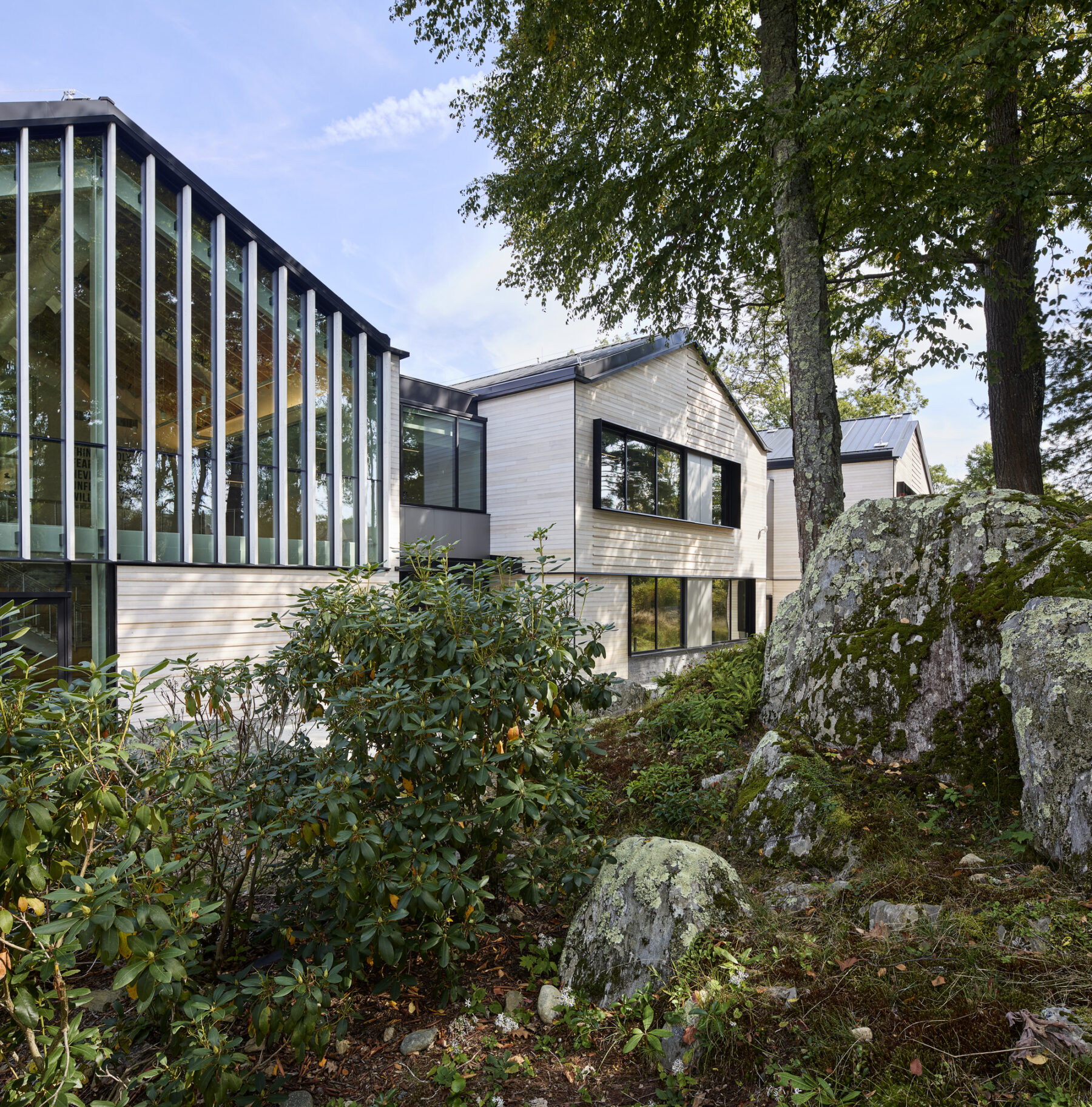
Vertical wood fins on the east and west facades read as integral building elements, provide shading from low-angle morning and afternoon glare, and frame views to the exterior
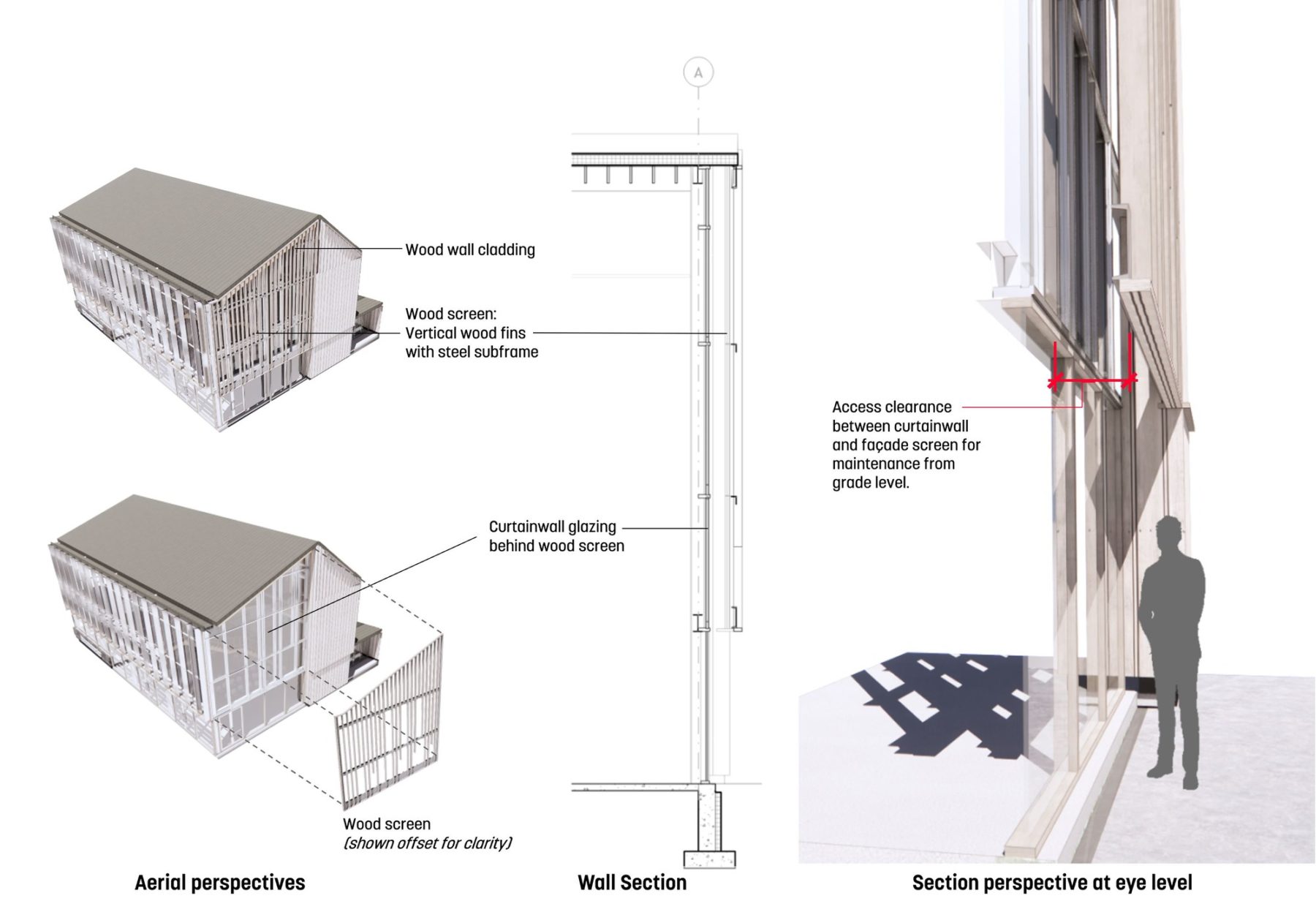
Sasaki also designed the building’s landscape, which creates new circulation paths from the campus’ two primary open spaces, the Glade and the Quad. The footprint of the building is designed to preserve adjacent rock outcrops.
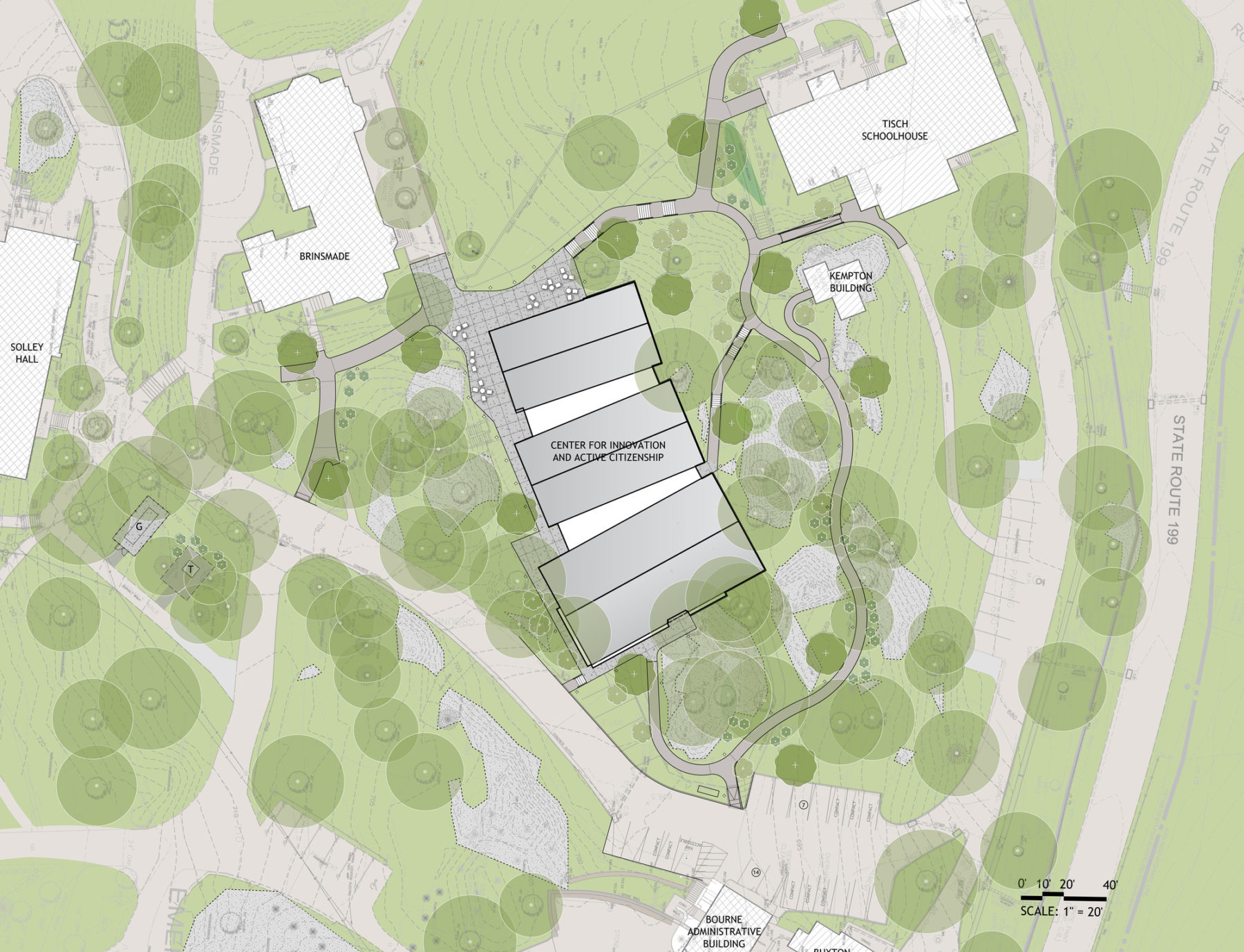
Site Plan
The building’s program transitions from more purpose-built spaces, such as labs for physics, biology and chemistry to more flexible spaces such as shared flex classrooms, the Entrepreneurship Center and the Center for Just Democracy.
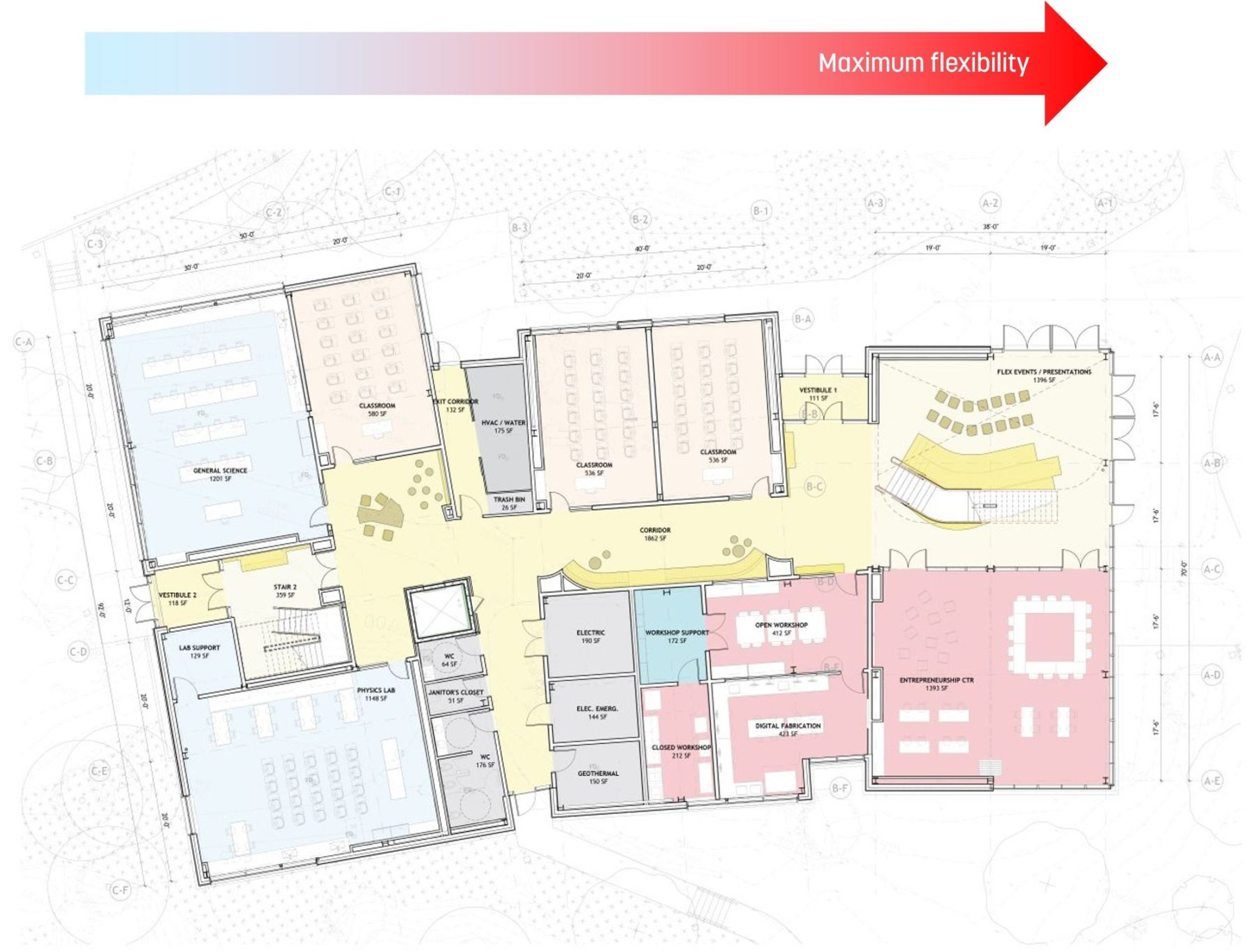
First Floor Plan
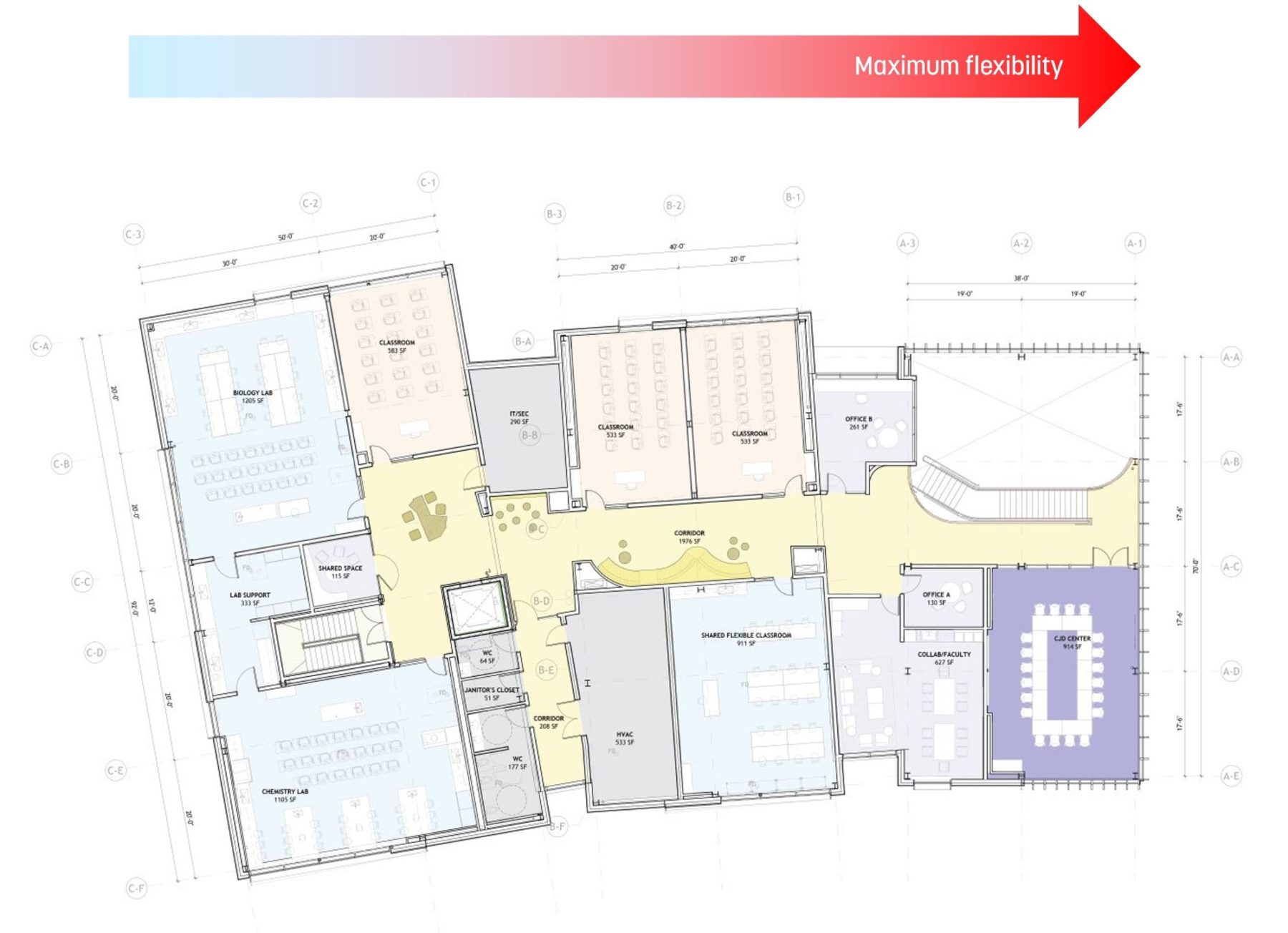
Second Floor Plan
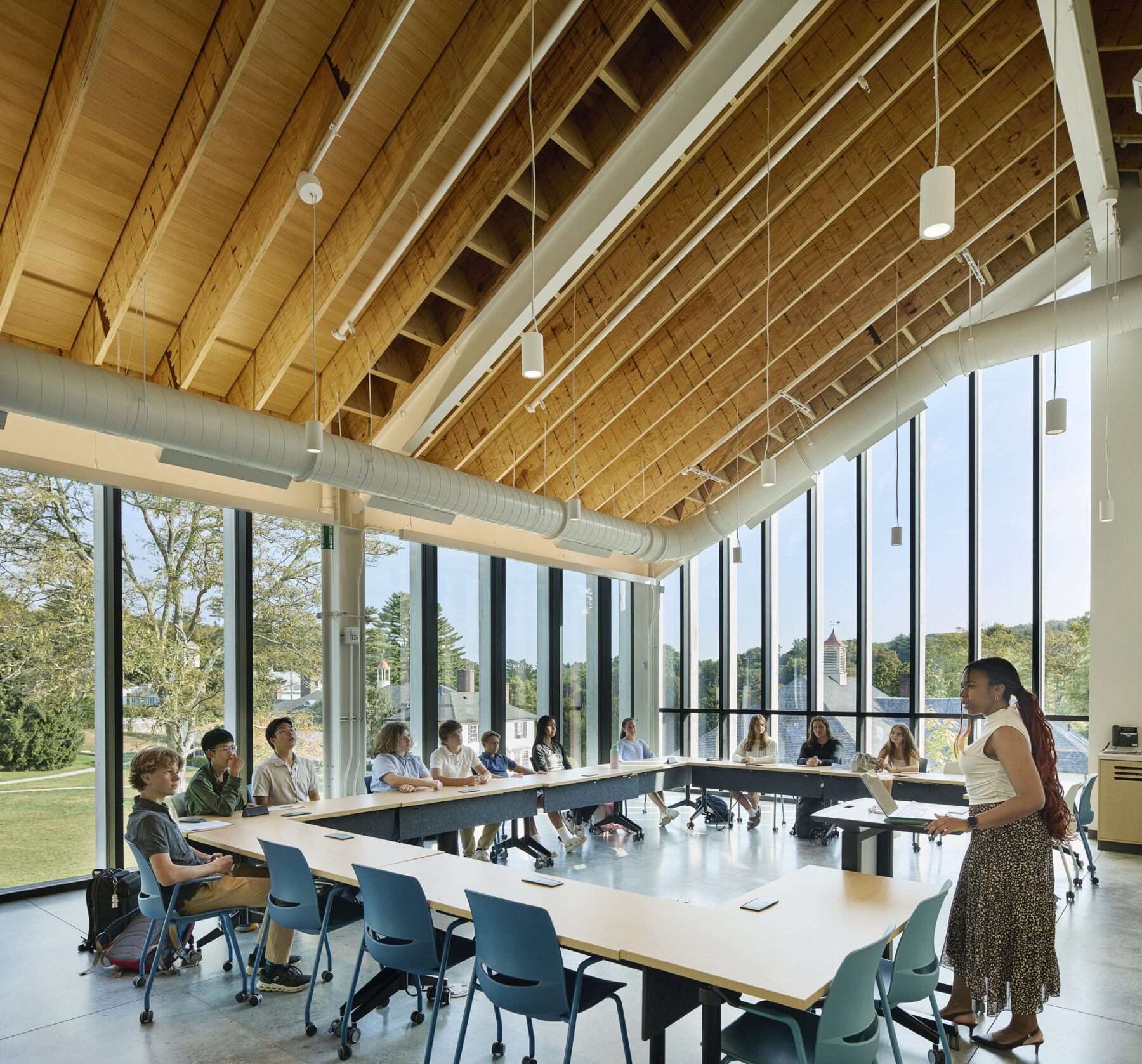
The Center for Just Democracy is an open, transparent learning space with views out to the campus
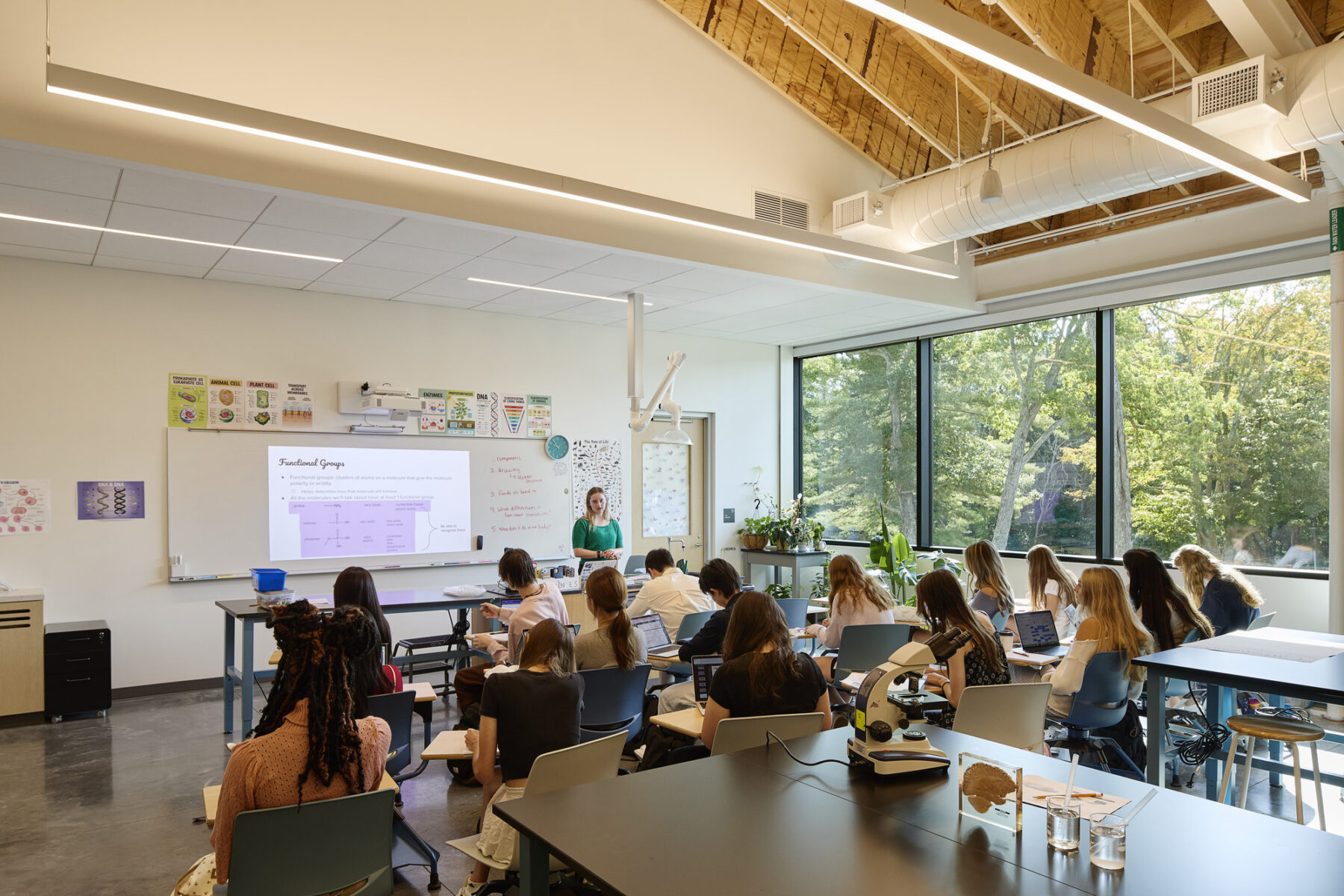
Biology Lab
Minimizing the impact on the environment was a top priority in the design process. Solar photovoltaic panels provide sustainable energy and a geothermal well field provides most of the heating and cooling. Combined with a highly efficient envelope, these contribute to bringing the project close to Net Zero.
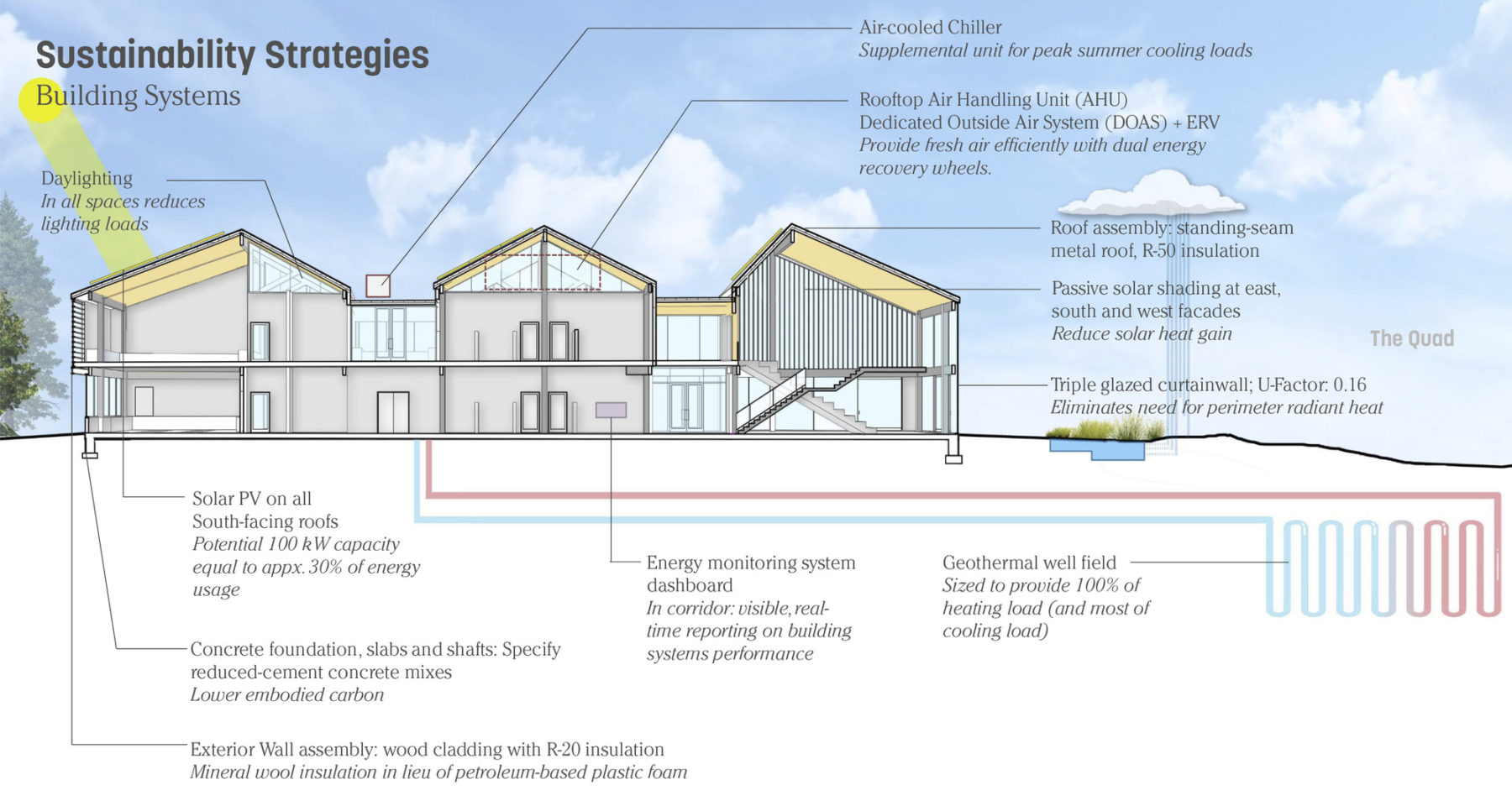
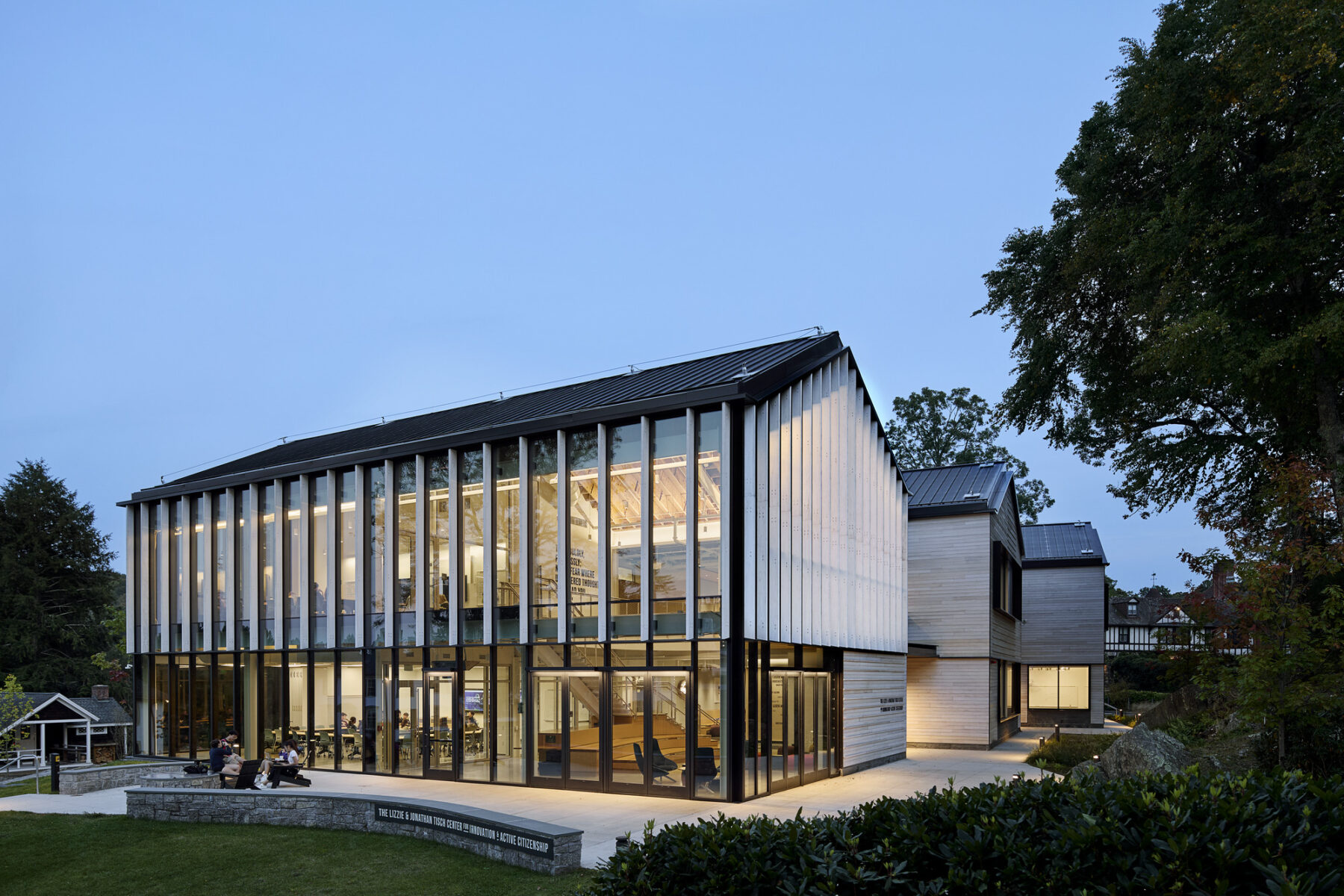
Affectionately called “The Lizzie,” the Tisch Center for Innovation and Active Citizenship unites a range of learning environments together in one integrated building that allows students and faculty to turn ideas into action.
For more information contact Vinicius Gorgati or Marta Guerra-Pastrián.
A conversation between Sasaki principal Vinicius Gorgati and Lawrenceville School Head Master Steve Murray
The Center for Innovation and Active Citizenship will bring several learning environments together in one integrated building